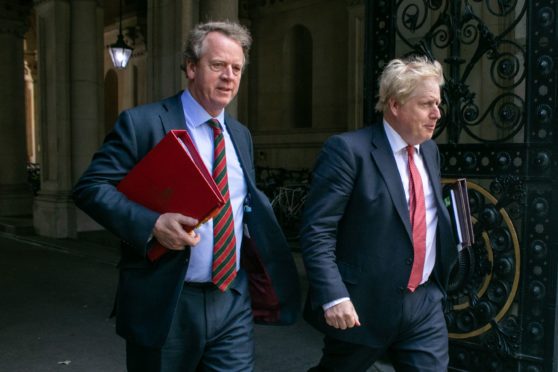
Messaging from the UK Government intended for England during the Covid-19 pandemic caused “unnecessary confusion” in devolved countries, MPs have said.
In its interim report on intergovernmental working during the pandemic, the Scottish Affairs Committee called on Downing Street to outline how it plans to address what it described as its “failings in messaging”.
On May 10, the UK Government announced a shift from telling people to “stay at home” to advising they “stay alert”.
The message was then broadcast UK-wide, despite no changes in the devolved administrations.
Scottish Secretary Alister Jack told the committee First Minister Nicola Sturgeon was aware of an impending change but was not told what change would be made, the report said.
The report said: “The UK Government has failed to make clear when its messaging applies only to England, causing unnecessary confusion in the devolved nations.
“There should be messaging clarity to minimise confusion across national boundaries, and this must begin to happen with immediate effect.
“Then, in its response to the committee, the Government must outline how it intends to address its failings in messaging and how it plans to distribute future messages.”
Messaging should make clear which parts of the UK it is aimed at from the outset, the report said.
It added: “Post-message clarification is too late a point for providing these explanations since it risks leaving members of the public without the information they need to determine which messages apply to them when they need it.”
The report, published on Thursday, also said divergence between the devolved administrations and the UK Government happened “sometimes accidentally”.
Scottish Affairs Committee chairman Pete Wishart also voiced concerns about the “pre-existing, creaking mechanisms at the heart of intergovernmental relations”.
Mr Wishart added there is seen to be a “void” in intergovernmental communications after Ministerial Implementation Groups (MIGs) – panels set up to allow for contact between the governments in key areas – were stopped.
He said: “As the focus has shifted from containment to opening up the economy, we are concerned that the structures that made this possible have stopped.
“We heard that there is a ‘void’ in ministerial-level communication and which appears to have occurred around the time that some divergence and confusion in messaging began to emerge.
“Simple mistakes of not making clear which nations in which new policies apply must not be made again.
“Meanwhile, the lack of clarity over what role, if any, Scottish and devolved decision-makers will play in new structures is a source of major concern.”

Enjoy the convenience of having The Sunday Post delivered as a digital ePaper straight to your smartphone, tablet or computer.
Subscribe for only £5.49 a month and enjoy all the benefits of the printed paper as a digital replica.
Subscribe